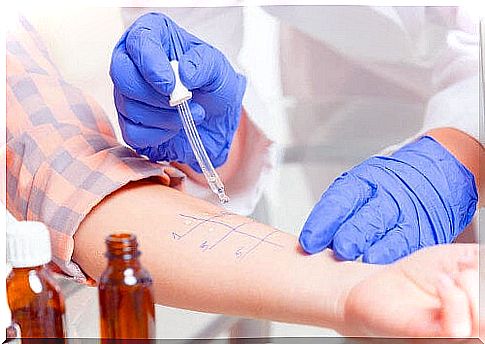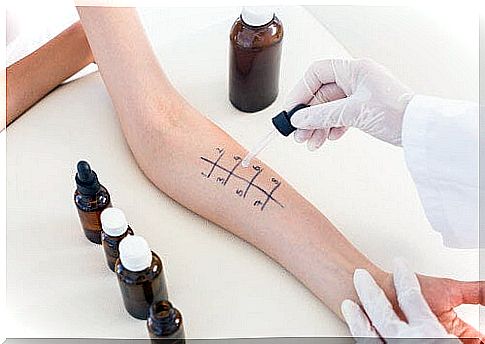Sensitization Test: When Is It Used And How

Generally speaking, allergy test is a medical term that refers to a set of procedures that can identify an allergy in a patient.
It can be done in different ways. Among the most common methods are skin prick tests or skin allergy tests, blood tests, and controlled exposure to a problem drug. Likewise, the medical team may do a skin allergy test or run patch tests.
In studies of an allergic patient, we have blood tests on the one hand. These are laboratory tests that differ from other techniques. They consist in the fact that the existence of substances appearing in the patient’s bloodstream as a result of an allergic reaction is checked in a laboratory. Usually, IgE antibodies, the cells involved in protecting our body against substances considered “dangerous”, are found.
On the other hand, we find in vivo procedures: spot test, patch test and controlled exposure to a suspect substance. In these tests , the medical team checks to see if the patient has an allergic reaction.
To identify it, it is tested to see if the patient shows any symptoms similar to previous allergic reactions. In case of drug exposure, it can be administered orally, nasally, directly into the bronchi, etc. according to its characteristics.
When is a drug allergy test used?
Typically, the medical team uses this type of technique if the patient has shown an allergic reaction for unknown reasons. Likewise, medications can cause different symptoms depending on their properties.

According to recent studies, virtually all drugs can cause adverse reactions in the patient. However, there are compounds that may be more likely to generate hypersensitivity. For example, the symptoms of a more frequent allergic reaction include the following:
- Hives
- Generalized itching or itching in the area of application.
- Skin rashes.
- Fever that may vary in intensity.
- Tearing and stinging or burning sensation in the eyes.
- Inflammation in the area of drug administration.
- Anaphylactic shock in the most severe or complicated cases.
Different types of drugs can be tested as part of susceptibility testing. Therefore, this group includes anesthetics, antibiotics, etc.
In any case, the medical team should check for the presence of allergies or sensitivities. As a result, the most appropriate drugs can be given for each person and for each lesion, which will not be so burdensome for the patient.
How is the skin prick test or allergy tests performed?
Usually, before starting the test, the patient’s skin in the forearm area is disinfected with alcohol. The medical team then injects a small amount of the drug into the skin. Later, the areas where punctures were made are marked and the residues are cleaned.
After the test, the patient should wait about fifteen minutes to see if an allergic reaction has occurred. During this time, he should not scratch or touch or alter the marked injection areas as part of the allergy test.

How is an allergic patch test or skin test performed?
In this case , the patient’s back is disinfected and a series of patches impregnated with the test substance are placed. In this way, the compound is released slowly over 48 hours.
After this period, the test subject must return to the consultation to remove the patch set. At this point, the doctor will also assess whether there is an allergic reaction under them.
The most common recommendation for this type of trial is to avoid wetting the area with the patches. It is also not recommended to scratch, intense exercise that causes sweating or the patches may peel off, etc. If possible, it is also not recommended to take other medications and use other patches.
Controlled exposure to suspicious drugs
This method, in turn, can be used to test for direct drug allergy or to test a patient’s tolerance to other similar substances.
On the other hand, one of the disadvantages of this type of test is that the risk is greater than with other techniques. Therefore, a team of specialists has to weigh the possible benefits against potential adverse reactions.
In some cases, it is necessary to repeat the procedure, as it is possible that the result is negative, even if the patient is allergic. In any case, experts will decide which allergy test is the best and inform the patient of their decision.









